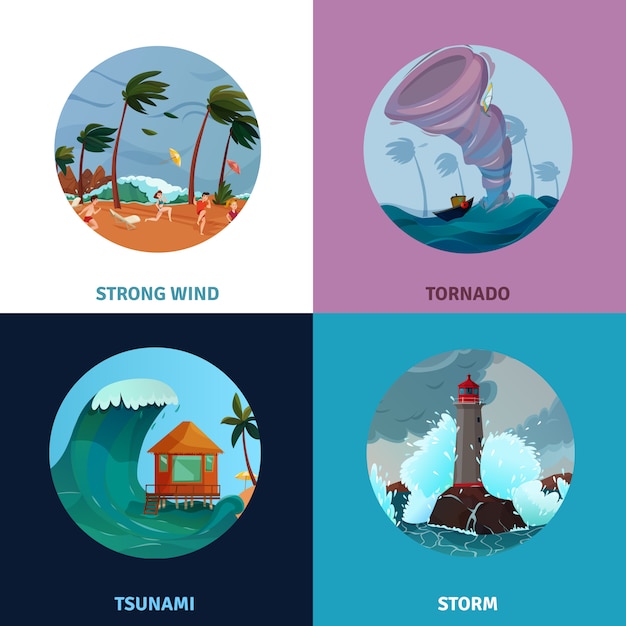Discover Fascinating Facts about Hurricanes

Hurricanes are like giant thunderstorms on steroids.
Hurricanes can release energy equivalent to 10 atomic bombs.
The word hurricane comes from the Taino Native American word huracan, meaning evil spirit of wind.
Hurricanes can produce winds over 200 miles per hour.
Hurricanes form over warm ocean waters near the equator.
Hurricanes can be as large as 500 miles in diameter.
The eye of a hurricane is a calm, relatively clear area in the center.
The eyewall of a hurricane is the area of intense thunderstorms surrounding the eye.
Hurricanes can cause storm surges, which are like giant walls of water crashing ashore.
The strongest hurricanes are classified as Category 5 on the Saffir-Simpson scale.
Hurricanes are named to avoid confusion if multiple storms occur at the same time.
The first hurricane to receive a male name was Hurricane Bob in 1979.
Hurricanes rotate in a counterclockwise direction in the Northern Hemisphere.
In the Southern Hemisphere, hurricanes rotate clockwise.
Hurricanes can last for over a week, but most peak in intensity within a day or two.
Hurricane Katrina, which struck the Gulf Coast in 2005, caused over $125 billion in damage.
The Great Galveston Hurricane of 1900 is considered the deadliest natural disaster in U.S. history.
The eyewall of a hurricane contains the strongest winds and heaviest rainfall.
Hurricanes are unpredictable and can change course suddenly.
Discover Fascinating Facts about Hurricanes part 2
The Atlantic hurricane season officially runs from June 1 to November
The Pacific hurricane season is typically longer, lasting from May 15 to November
Hurricanes require warm ocean temperatures of at least 80 degrees Fahrenheit to form.
A hurricane watch means conditions are favorable for a hurricane to develop.
A hurricane warning means a hurricane is expected to strike within 36 hours.
The diameter of a hurricane can span multiple states or even small countries.
The eye of a hurricane is usually 20-40 miles in diameter.
Hurricanes can produce tornadoes within their bands of thunderstorms.
The 1935 Labor Day Hurricane in the Florida Keys is the strongest hurricane ever recorded in the Atlantic.
The World Meteorological Organization retires the names of particularly destructive hurricanes.
The rotation of Earth plays a role in the formation and direction of hurricanes.
Hurricanes are often named after saints or historical figures.
Hurricane hunters fly into hurricanes to gather data and monitor their intensity.
The strongest winds in a hurricane are found in the right front quadrant.
Hurricane Andrew in 1992 was responsible for one of the largest evacuations in U.S. history.
Hurricanes can generate immense rainfall, leading to flash floods and landslides.
The storm surge from Hurricane Sandy in 2012 caused severe flooding in parts of New York City.
The eye of a hurricane is eerily calm, with clear skies and light winds.
Hurricanes typically weaken rapidly when they make landfall.
The eye of a hurricane can be surrounded by a dense ring of thunderstorms called the moat.
The strongest hurricanes can have an impact on global weather patterns.
Hurricane Maria caused widespread devastation in Puerto Rico in 2017, leading to a humanitarian crisis.
The 1900 Galveston Hurricane led to the construction of seawalls and improved hurricane forecasting.
Hurricanes that form in the Pacific Ocean are called typhoons.
Hurricane Harvey in 2017 caused significant flooding in Houston, Texas.
The eye of a hurricane can temporarily disrupt radar systems and communication signals.

